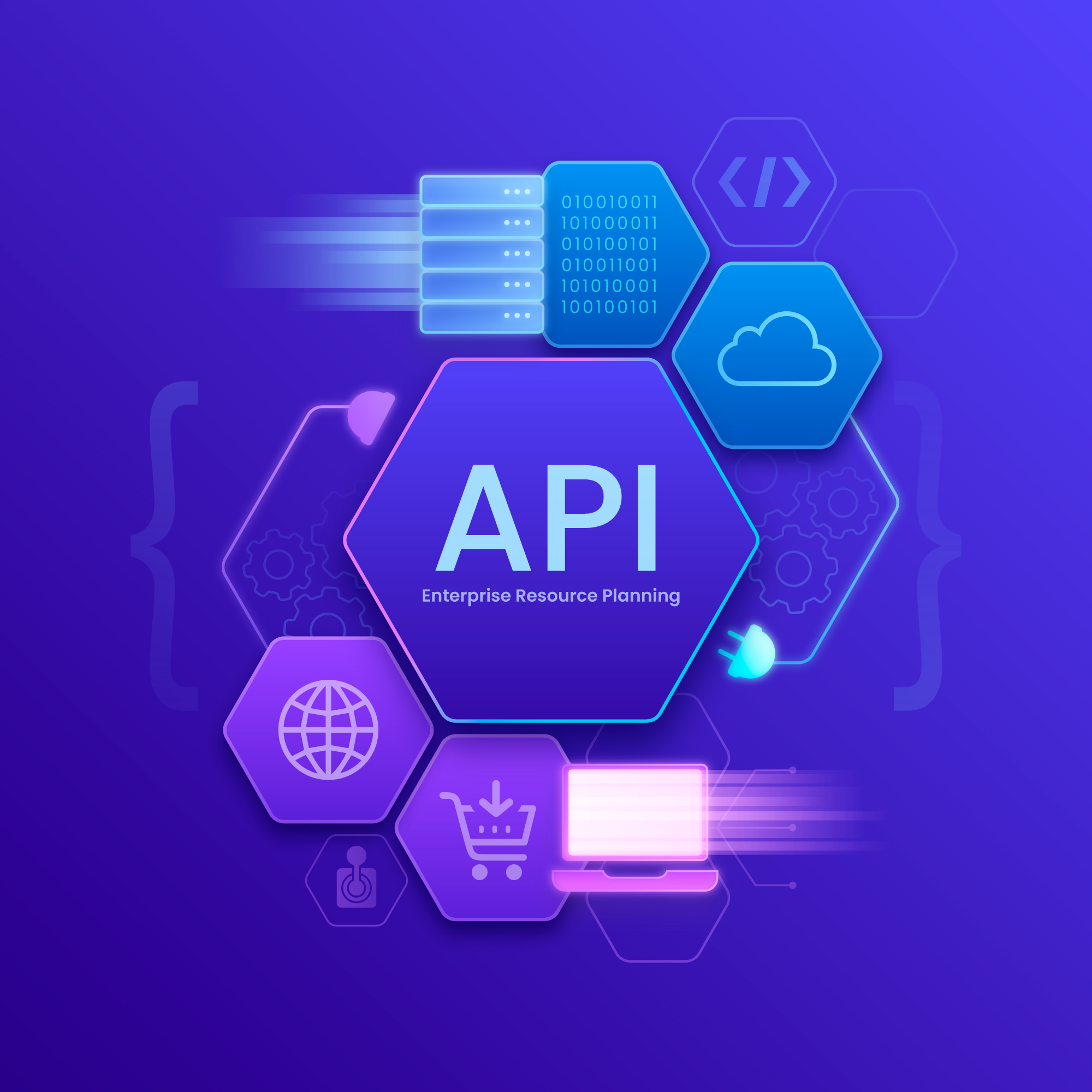
How to Create Reusable Infor LN Integration Templates
Are you grappling with repetitive, error-prone Infor LN integrations for every new project? At Sama Integrations, we recognize the inefficiencies of ad-hoc integration workflows that inflate costs and delay deployments. Infor LN, a comprehensive ERP system for manufacturing, logistics, and supply chain industries, manages complex processes like production planning, inventory control, and financials. However, integrating Infor LN with external systems—such as Salesforce for CRM, Manhattan Associates for WMS, or custom third-party applications—often involves redundant coding and inconsistent configurations. Reusable integration templates offer a solution by standardizing workflows, ensuring modularity, and enabling scalability.
These templates can reduce integration development time by up to 40%, as evidenced by case studies in manufacturing firms, while maintaining data consistency and lowering maintenance overhead. This guide dives deep into the technical intricacies of creating reusable Infor LN integration templates, leveraging tools like Infor ION, REST/SOAP APIs, and middleware platforms. Aimed at IT managers, ERP administrators, and integration developers, this article provides a step-by-step blueprint, enriched with code snippets, architectural patterns, and real-world examples. Whether you’re synchronizing sales orders or automating supply chain workflows, Sama Integrations empowers you to optimize your ERP integrations with expert solutions.
Need Streamlined Infor LN Integration Templates?
Creating reusable Infor LN integration templates can transform your ERP connectivity, saving time and reducing errors. Our expert team at Sama Integrations delivers tailored, scalable solutions to optimize your workflows. Contact us to simplify your integrations today.
Understanding Infor LN Integrations
What is Infor LN?
Infor LN is an enterprise-grade ERP system tailored for discrete and process manufacturing, logistics, and aerospace industries. It encompasses modules for financial management, supply chain planning, manufacturing execution, and service management, built on a modular architecture that supports multi-site operations. Its integration layer, primarily powered by Infor ION, facilitates connectivity with external systems through standards-based protocols like REST APIs, SOAP web services, and file-based exchanges (e.g., CSV, XML). Infor LN’s data model, based on Business Object Documents (BODs), provides structured XML/JSON representations for entities like orders, invoices, and inventory, enabling seamless data exchange.
Infor ION, the middleware backbone, orchestrates integrations using a publish-subscribe model, supporting both synchronous and asynchronous communication. For example, Infor LN can publish a SalesOrder BOD to ION, which routes it to a CRM system via a REST API. This flexibility makes Infor LN a cornerstone for complex integrations but demands structured approaches to avoid inefficiencies.
Why Reusable Templates?
Ad-hoc integrations for Infor LN are resource-intensive, often requiring custom code for each endpoint or system. This leads to challenges like:
- Redundancy: Repeatedly coding similar integrations for different systems (e.g., multiple WMS platforms).
- Maintenance Overhead: Hard-coded integrations are difficult to update when APIs or schemas change.
- Inconsistency: Variations in data formats or error handling lead to integration failures.
A 2023 Gartner report highlights that 70% of ERP integration projects exceed budgets due to poor standardization, with 60% facing delays from maintenance issues. Reusable templates mitigate these by:
- Standardizing Workflows: Templates encapsulate common integration logic, such as API calls or data transformations.
- Enabling Modularity: Component-based designs allow reuse across projects.
- Supporting Scalability: Templates can handle increased transaction volumes or new systems.
For expert planning to address these challenges, our Consulting Services offer tailored strategies to optimize your Infor LN integrations.
Key Integration Patterns
Infor LN supports several integration patterns, each suited to specific use cases:
- Infor ION Workflows: ION’s event-driven architecture uses BODs to orchestrate data flows. It supports transformations, routing, and monitoring, ideal for Infor-to-Infor integrations.
- REST APIs: Lightweight, JSON-based APIs for real-time integrations, leveraging Infor LN’s API Gateway for endpoints like /orders or /inventory.
- SOAP Web Services: XML-based services with WSDL definitions, suitable for secure, complex transactions (e.g., financial data exchanges).
- File-Based Integrations: Batch processing via flat files (CSV, XML) for high-volume data transfers, often using SFTP or file shares.
Example: A REST API integration might fetch order data from https://inforln.api/orders using OAuth 2.0 authentication, while a file-based integration might export inventory updates as CSV files to an SFTP server.
Need Streamlined Infor LN Integration Templates?
Creating reusable Infor LN integration templates can transform your ERP connectivity, saving time and reducing errors. Our expert team at Sama Integrations delivers tailored, scalable solutions to optimize your workflows. Contact us to simplify your integrations today.
Benefits of Reusable Integration Templates
Reusable templates transform Infor LN integrations by delivering:
- Efficiency: Templates reduce development time by reusing pre-built components. A logistics firm reported a 40% reduction in integration time by standardizing API calls across WMS platforms.
- Consistency: Uniform schemas and workflows minimize data errors. For instance, standardized JSON schemas ensure consistent order data across systems.
- Scalability: Templates adapt to new systems or increased data volumes, supporting business growth without extensive reengineering.
- Cost Savings: A 2022 IDC study found that standardized integrations reduce operational costs by 30% through lower development and maintenance efforts.
Case Study: A manufacturing company integrated Infor LN with a third-party e-commerce platform using reusable templates. By standardizing API endpoints and data mappings, they reduced integration time from four weeks to ten days, improving order fulfillment by 20%.
Our Managed Integration Services ensure ongoing optimization and maintenance of your templates, maximizing these benefits.
Step-by-Step Guide to Creating Reusable Infor LN Integration Templates
This section provides a technical, actionable guide to building reusable templates, with detailed steps, code snippets, and architectural considerations.
Step 1: Define Integration Requirements
Begin by analyzing the systems to integrate with Infor LN (e.g., Salesforce, SAP, or custom applications). Identify the data entities (e.g., SalesOrder, InventoryItem) and map their flows. For each integration, define:
- Endpoints: Source and target systems (e.g., Infor LN’s /orders API to Salesforce’s /sobjects/Order).
- Data Fields: Map fields like OrderID, CustomerID, and OrderDate.
- Frequency: Real-time (API) or batch (file-based).
- Constraints: Security requirements (e.g., OAuth 2.0), data volume, or latency.
Example Data Flow:
- Source: Infor LN SalesOrder BOD.
- Target: Salesforce Order object.
- Mapping: OrderID → OrderNumber, CustomerName → Account.Name.
Suggested Visual: A flowchart illustrating the data flow from Infor LN to Salesforce (Alt text: “Flowchart of Infor LN integration template data flow for sales order synchronization”).
Step 2: Choose the Right Tools
Select tools based on integration complexity and reusability goals:
Infor ION: Offers a low-code interface for configuring workflows, transformations, and routing. It supports BOD-based integrations and integrates natively with Infor LN.
- Pros: Simplified setup, built-in monitoring.
- Cons: Limited flexibility for non-Infor systems.
REST APIs: Use Infor LN’s API Gateway for endpoints like https://inforln.api/v1/orders. Requires HTTP clients (e.g., Axios, Postman) and JSON parsing.
- Pros: Lightweight, real-time.
- Cons: Needs robust error handling.
SOAP Web Services: Leverage WSDL-based services for structured, secure integrations.
- Pros: Reliable for complex transactions.
- Cons: Verbose XML payloads.
Middleware (Boomi, MuleSoft): Provides advanced transformation, orchestration, and scalability.
- Pros: Highly reusable, supports multiple protocols.
- Cons: Higher setup and licensing costs.
Example: For real-time order syncing, use REST APIs with Infor ION as a routing layer to transform BODs into JSON payloads.
Step 3: Design Modular Templates
Modularity ensures templates are reusable across projects. Break integrations into components:
- API Call Templates: Generic HTTP requests for Infor LN endpoints.
- Data Transformation Modules: Reusable mappings for BOD-to-JSON or XML conversions.
- Error Handling Logic: Standardized retry and logging mechanisms.
Code Snippet (Infor ION Workflow XML for Reusable API Call):
<Workflow name=”GenericAPICall”>
<Step name=”FetchData”>
<Action type=”REST”>
<Endpoint>{baseUrl}/{entity}</Endpoint>
<Method>GET</Method>
<Headers>
<Authorization>Bearer {token}</Authorization>
</Headers>
<Output>{entity}Data</Output>
</Action>
</Step>
</Workflow>
This template uses placeholders ({baseUrl}, {entity}) for reusability across endpoints like /orders or /inventory.
Step 4: Standardize Data Formats
Consistent schemas prevent data mismatches. Use JSON or XML schemas to define standard structures for entities like orders or inventory.
Example JSON Schema (Sales Order):
{
“$schema”: “http://json-schema.org/draft-07/schema#”,
“type”: “object”,
“properties”: {
“OrderID”: { “type”: “string”, “pattern”: “^ORD[0-9]{6}$” },
“CustomerID”: { “type”: “string” },
“OrderDate”: { “type”: “string”, “format”: “date-time” },
“Items”: {
“type”: “array”,
“items”: {
“type”: “object”,
“properties”: {
“ItemID”: { “type”: “string” },
“Quantity”: { “type”: “integer”, “minimum”: 1 }
},
“required”: [“ItemID”, “Quantity”]
}
}
},
“required”: [“OrderID”, “CustomerID”, “OrderDate”]
}
This schema enforces consistent order data, validated using tools like AJV (Another JSON Validator).
Step 5: Implement Error Handling and Logging
Robust templates handle errors gracefully and log issues for troubleshooting. Implement:
- Retry Logic: Automatically retry failed API calls (e.g., 3 attempts with exponential backoff).
- Error Alerts: Notify administrators via email or Infor ION Desk.
- Logging: Record errors with timestamps, codes, and payloads.
Code Snippet (JavaScript Error Logging):
function logError(error, context) {
const logEntry = {
timestamp: new Date().toISOString(),
integration: context.integrationName,
errorCode: error.code || ‘UNKNOWN’,
message: error.message,
payload: error.payload || null
};
// Send to Infor ION Desk or external logging service
console.log(JSON.stringify(logEntry));
}
This reusable function logs errors in a structured JSON format, adaptable for different integrations. For ongoing troubleshooting, our Support and Troubleshooting Services provide expert assistance.
Step 6: Test and Validate
Thorough testing ensures template reliability:
- Unit Testing: Validate individual components (e.g., API calls, transformations) using tools like Postman or Jest.
- Integration Testing: Simulate end-to-end workflows, verifying data consistency across systems.
- Load Testing: Test templates under high data volumes (e.g., 10,000 orders/hour) using tools like JMeter.
- Validation: Use schema validators (e.g., AJV for JSON) to ensure data integrity.
Example: Test a REST API integration by sending a sample order payload to https://inforln.api/v1/orders and verifying the response status and data.
Step 7: Document and Version Control
Comprehensive documentation and version control are critical for reusability:
- Documentation: Detail inputs, outputs, configurations, and dependencies.
- Version Control: Use Git to track changes, with branches for development and production templates.
Sample Documentation:
# Sales Order Integration Template
– **Purpose**: Syncs sales orders from Infor LN to external CRM.
– **Inputs**: OrderID (string), CustomerID (string), OrderDate (date-time), Items (array).
– **Outputs**: CRM Order Record ID (string).
– **Configuration**:
– Endpoint: `https://inforln.api/v1/orders`
– Authentication: OAuth 2.0 with client credentials.
– **Dependencies**: Infor ION 12.0.0+, REST API Gateway.
– **Version**: 1.0.0
Store documentation in a centralized repository (e.g., Confluence) and use Git tags (e.g., v1.0.0) for versioning.
Step 8: Deploy and Monitor
Deploy templates using Infor ION’s deployment tools or middleware platforms like Boomi. Configure monitoring to track performance and errors:
- Monitoring Tools: Use Infor ION Desk for real-time metrics (e.g., success rate, latency).
- Alerts: Set up notifications for failures (e.g., HTTP 500 errors) via email or Slack.
- Performance Optimization: Optimize API calls with caching or batch processing for high-volume integrations.
Example: Deploy an order sync template in Infor ION, configuring a workflow to poll SalesOrder BODs every 5 minutes and route them to a CRM.
For post-deployment support, our Support and Troubleshooting Services ensure your integrations remain reliable.
Need Streamlined Infor LN Integration Templates?
Creating reusable Infor LN integration templates can transform your ERP connectivity, saving time and reducing errors. Our expert team at Sama Integrations delivers tailored, scalable solutions to optimize your workflows. Contact us to simplify your integrations today.
Best Practices for Maintaining Reusable Templates
To ensure long-term effectiveness, adhere to these practices:
- Versioning: Use semantic versioning (e.g., 1.0.0) in Git to track changes and maintain compatibility.
- Scalability: Design templates with horizontal scaling in mind, using asynchronous processing for high-volume data (e.g., RabbitMQ for message queues).
- Security: Implement OAuth 2.0 with refresh tokens and encrypt sensitive data using AES-256. Regularly rotate API keys and certificates.
- Regular Updates: Schedule quarterly reviews to align templates with Infor LN upgrades (e.g., 10.7 to 10.8) and API changes.
Our Managed Integration Services provide professional maintenance, ensuring your templates remain secure and optimized.
Challenges and Solutions
Reusable templates face several challenges:
- Changing APIs: Infor LN or external system APIs may update, breaking templates. Solution: Use middleware (e.g., Boomi) to abstract API changes and maintain versioned endpoints.
- Data Inconsistencies: Mismatched schemas cause data errors. Solution: Implement schema validation and fallback mappings.
- System Upgrades: Infor LN upgrades may alter BOD structures. Solution: Test templates post-upgrade and use Infor’s compatibility documentation.
For complex integration challenges, our Custom Development Services deliver tailored solutions to meet specific requirements.
Conclusion
Reusable Infor LN integration templates revolutionize ERP connectivity by enabling efficiency, consistency, and scalability. By defining requirements, selecting appropriate tools, designing modular components, and adhering to best practices, you can streamline integrations with systems like Salesforce, WMS, or custom applications. Real-world successes, such as a 40% reduction in integration time for a manufacturing firm, underscore the value of this approach.
At Sama Integrations, we specialize in crafting robust Infor LN integration solutions. Ready to optimize your ERP integrations? Contact us to explore our Consulting Services for expert guidance and support tailored to your business needs.
Disclaimer: Results may vary based on system configuration and integration complexity. For pricing details, visit Sama Integrations.
Need Streamlined Infor LN Integration Templates?
Creating reusable Infor LN integration templates can transform your ERP connectivity, saving time and reducing errors. Our expert team at Sama Integrations delivers tailored, scalable solutions to optimize your workflows. Contact us to simplify your integrations today.




